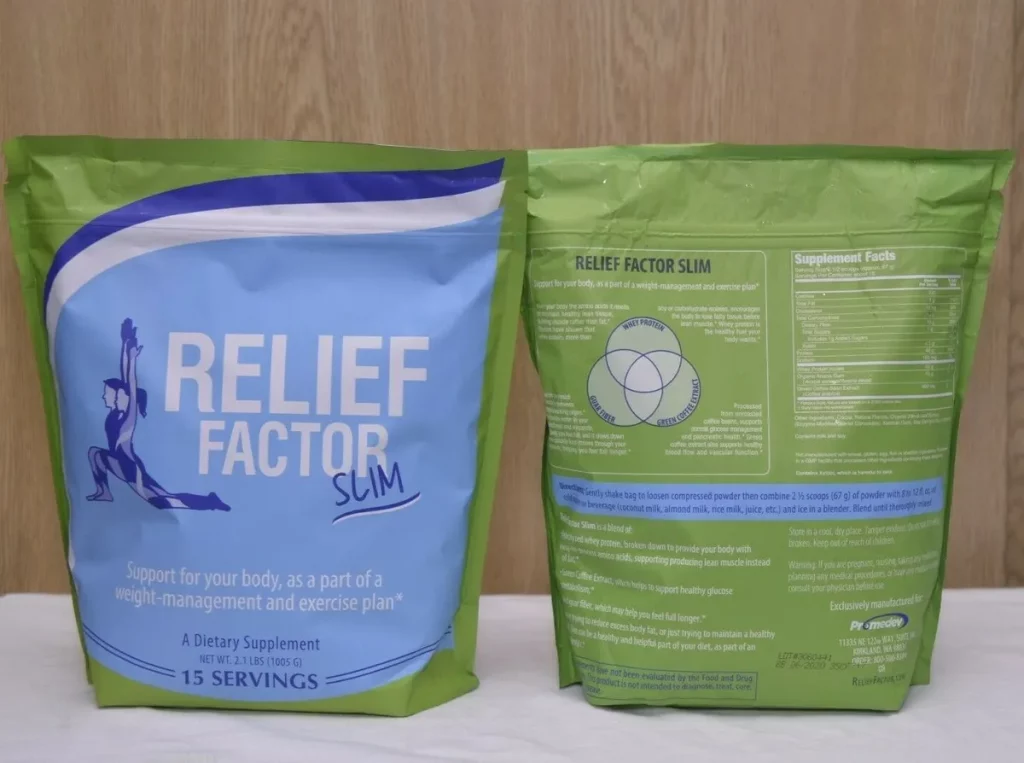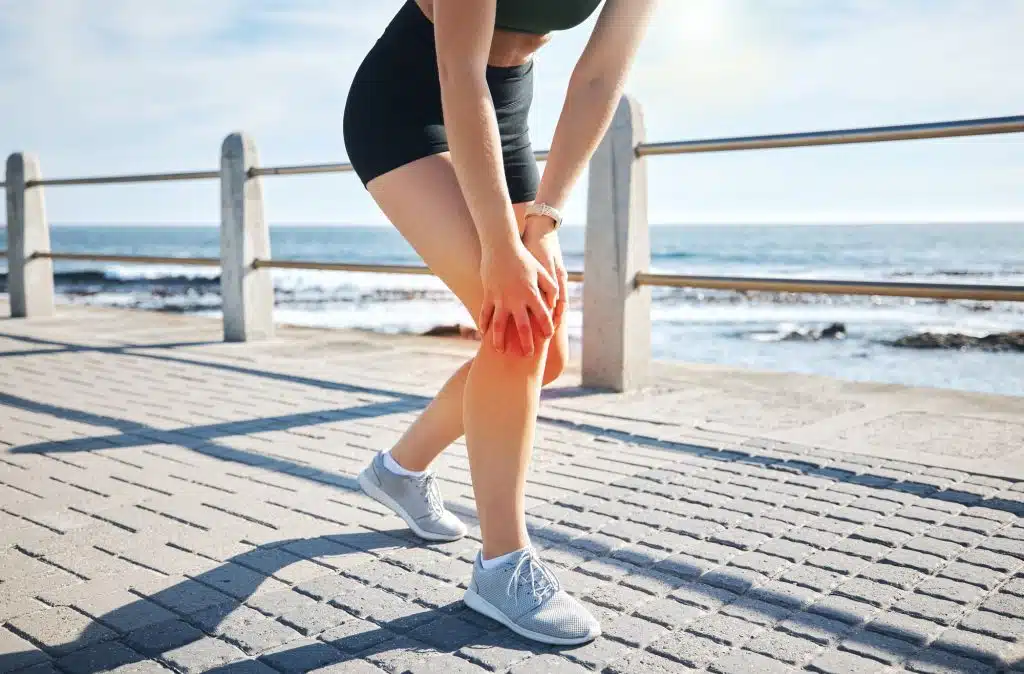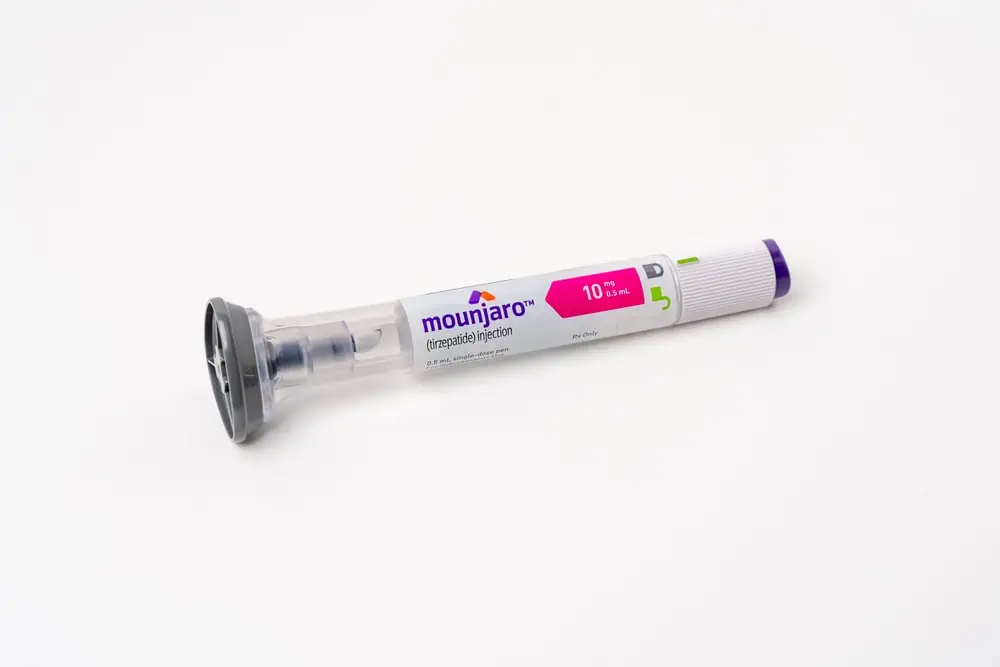Elbow joint pain can be a significant hindrance to carrying out daily activities, whether it arises from overuse, an injury, or an underlying condition. We understand that finding effective relief is paramount for those suffering from discomfort in their elbows. While the approach to treatment may vary depending on the cause of the pain, there are several strategies that we can try to relieve elbow joint pain.

In most cases, elbow joint pain can be addressed with initial home remedies such as rest, ice, and over-the-counter medications. However, if the pain persists or is the result of a more serious condition, seeking out medical treatments and therapies becomes essential. It’s important that we also focus on prevention and maintenance to avoid future issues, and consulting with a specialist can provide a precise diagnosis and tailored treatment options.
Key Takeaways
- Effective ways to relieve elbow joint pain often start with home remedies, including rest and ice.
- Persistent or severe elbow pain may require professional medical advice.
- Prevention and proper diagnosis are key to maintaining elbow joint health.
Understanding Elbow Joint Pain
Elbow joint pain can be a significant hindrance in our daily activities, often resulting from a variety of causes. Here we’ll discuss the elbow’s anatomy, common sources of pain, and types of injuries that can affect this crucial joint.
Anatomy Of The Elbow Joint
The elbow joint is a complex hinge joint connecting three bones: the humerus (upper arm), the ulna, and the radius (forearm). It’s supported by muscles, ligaments, and tendons that facilitate movement. Inside the joint, cartilage prevents the bones from rubbing together, and bursae—small sacs of fluid—reduce friction. Our elbow’s range of motion, from straightening to bending and twisting, hinges on this sophisticated interplay of structures.
Common Causes Of Elbow Joint Pain
Elbow pain frequently stems from overuse, leading to conditions such as tennis elbow or golfer’s elbow, where tendons become inflamed. Pain may also arise from arthritis, which deteriorates the cartilage, or due to bursitis, where the bursae become inflamed. More acute causes include sprains—ligament injuries, and strains—muscle or tendon injuries. Recognizing these common causes aids us in seeking the right treatment.
Types Of Elbow Injuries
Our elbows are vulnerable to several types of injuries. Fractures involve a break in any of the elbow bones and usually result from trauma. Dislocations occur when bones are forced out of their normal position, frequently following a sudden impact. Ligament sprains and tendon strains are common in athletes and those with repetitive motion jobs, where continual stress leads to injury. Finally, overuse injuries, like tendonitis, develop over time from repeated motion, causing gradual wear and tear.
Initial Home Remedies
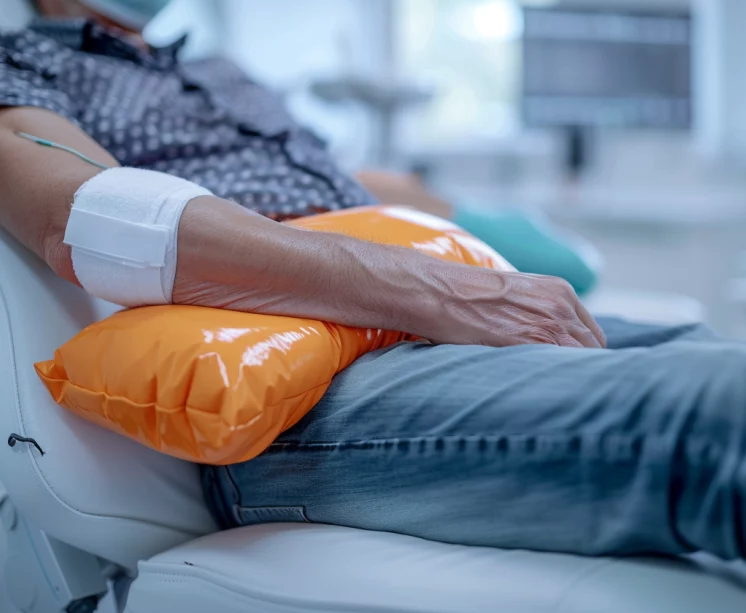
When we experience elbow joint pain, our first action should aim to manage discomfort and prevent further injury. These home remedies focus on immediate steps you can take using common household items.
Rest And Activity Modification
It’s crucial for us to give our elbows a break from movements that exacerbate the pain. If our routine includes tasks that strain the elbow joint, such as repetitive lifting or sports, we must temporarily stop these activities. We should aim for a balance between rest and gentle activity to maintain mobility without increasing pain or swelling.
Ice Application
Applying ice to the affected area can help reduce inflammation and numb sore tissues, providing short-term relief. We should use a cold pack for 15-20 minutes every few hours. To protect our skin, we’ll wrap the ice in a towel—never apply ice directly to the skin.
Compression Techniques
Compression can decrease swelling and provide support to our elbows. We’ll use an elastic bandage or a compression sleeve, wrapping it snugly but not too tight—our aim isn’t to cut off circulation. We should always monitor our arm for signs of increased pain or numbness, which might indicate that the wrap is too tight.
Elevation To Reduce Swelling
Whenever we can, we’ll elevate our elbow above the level of our heart. This elevation helps reduce swelling by increasing venous return of blood to the systemic circulation. We can prop our arm up on pillows, especially when sitting or lying down, to make this practice convenient and effective.
Medical Treatments And Therapies To Relieve Elbow Joint Pain

To relieve elbow joint pain, we prioritize effective management and therapies based on the individual’s condition. Our treatment plans often encompass medications, personalized physical therapy, and possibly advanced interventions or surgery.
Pain Management With Medications
For immediate relief of elbow joint pain, we frequently recommend nonsteroidal anti-inflammatory drugs (NSAIDs). These medications can reduce both pain and inflammation associated with conditions like osteoarthritis or rheumatoid arthritis. In cases of medial epicondylitis, also known as golfer’s elbow, NSAIDs may be an integral part of the treatment regimen.
Physical Therapy And Rehabilitation
Engaging in physical therapy provides our patients with exercises that are crucial in strengthening the muscles around the elbow joint, enhancing flexibility, and minimizing pain. A consistent rehabilitation routine tailored by a healthcare provider can significantly improve mobility and function, especially after an elbow injury.
Advanced Treatment Options
When customary treatments do not yield satisfactory results, we explore advanced options. These may include corticosteroid injections for their potent anti-inflammatory effect or viscosupplementation for joint lubrication. Both are targeted therapies that may offer relief for patients with osteoarthritis.
Surgical Interventions
Should all other treatment avenues fail to alleviate persistent elbow joint pain, surgery might be considered. Surgical approaches are reserved for cases where significant damage or degeneration is present, and they range from minimally invasive arthroscopy to total elbow joint replacement. Our healthcare professionals are well-versed in determining the best surgical option based on the patient’s individual needs.
Prevention And Maintenance
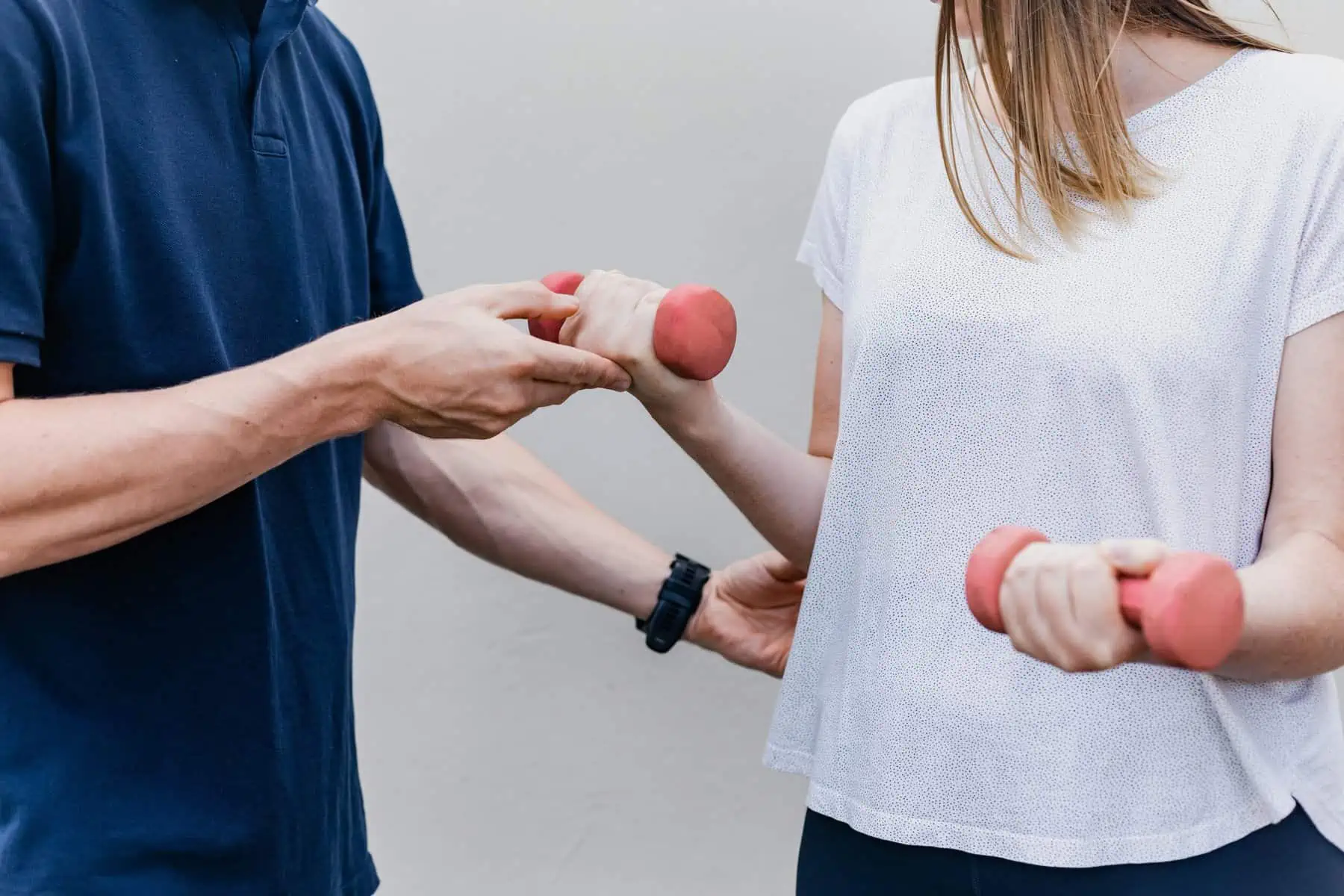
Elbow joint pain can be mitigated through proactive measures focusing on strength, flexibility, and proper equipment use. By integrating regular exercises, using protective gear, and optimizing our movements, we create a robust framework for elbow health.
Exercises For Strength And Flexibility
To maintain the health of our elbows, we integrate exercises specifically targeted at strengthening the muscles and stretching the tendons around the joint. For strength, we favor exercises that involve resistance such as wrist curls and reverse curls; these help combat issues that arise from repetitive movements and improper pronation. For flexibility, we prioritize daily stretches that extend and flex the wrist and arm, holding each stretch for a set duration to ensure the tissues remain supple and resilient.
Protective Equipment And Bracing
When engaging in activities that stress the elbow joint, the right protective equipment is crucial. Using bracing can stabilize the joint and distribute force more evenly, thereby reducing the potential for overuse injuries. Suitable elbow braces and supports offer compression and support during heavy use or while performing repetitive tasks. We always select the appropriate bracing that provides both comfort and protection without compromising on mobility.
Ergonomics And Technique
Our approach to minimizing elbow strain lies in the optimization of ergonomics and technique in our daily activities. We examine our workstations and tools to ensure they’re set up in a way that encourages neutral wrist and elbow positions, reducing unnecessary strain from poor angles and overuse. Furthermore, when performing any exercise or sports, we consciously maintain proper form and technique to reduce the risks associated with incorrect movements and excess force on the joints.
Diagnosis And Specialist Consultation

When dealing with elbow joint pain, it’s crucial to receive a thorough diagnosis and understand the steps a healthcare provider may take to determine the cause of your pain. A clear diagnosis is the cornerstone for effective treatment and relief.
When To See A Doctor
If you experience persistent elbow pain, it’s important for us to seek medical attention. We should visit a healthcare provider promptly if we notice severe pain, swelling, or difficulty in moving the elbow. Additionally, symptoms that interfere with our daily activities or do not improve with basic home care are clear indicators that a professional assessment is needed.
Diagnostic Tests And Imaging
During our visit, a healthcare provider will perform a physical examination to evaluate the pain and range of motion. To get a closer look at the internal structures of our elbow, imaging tests such as x-rays could be necessary. These tests assist in visualizing bone fractures, joint space, and can highlight issues with the ulnar nerve. In some cases, more advanced imaging like an MRI or CT scan may be required to assess soft tissue damage.
Understanding Your Diagnosis
After we have undergone the necessary examinations and tests, our healthcare provider will explain the diagnosis to us. A clear understanding of the condition will aid in discussing potential treatment options. Whether our diagnosis indicates arthritis, tendinitis, or another issue, we will have a better idea of the next steps to take towards recovery, including whether to seek the help of a specialist such as an orthopedist or a physical therapist.
Frequently Asked Questions
In this section, we’ll answer the most pressing questions about managing elbow joint pain, providing you with practical and proven methods to alleviate discomfort.
What Exercises Can I Perform At Home To Alleviate Elbow Pain?
Stretching the muscles in the forearm can sometimes offer relief from elbow pain. For example, stretching out the forearm muscles by straightening the elbow with the palm facing down and gently pulling the fingers toward the wrist may help.
How Can I Determine The Cause Of My Elbow Joint Pain?
Identifying the cause of elbow pain typically involves reviewing the specific symptoms and the activities that led to the discomfort. If the pain is accompanied by stiffness, redness, or swelling, these could be indicators of conditions such as olecranon bursitis or tendonitis.
Are There Effective Home Remedies For Treating Elbow Pain?
Common home remedies for elbow pain include applying ice or heat to the inflamed area and using over-the-counter pain or anti-inflammatory medications. It’s important to educate yourself about symptom management and to rest the affected joint adequately.
What Should I Do If My Elbow Hurts For An Extended Period Of Months?
Persistent elbow pain for several months warrants a consultation with a healthcare provider. They can assess your symptoms and may suggest interventions such as physical therapy or, in more severe cases, surgical options.
How Can I Manage Elbow Pain When Bending And Straightening My Arm?
Managing elbow pain involves gentle exercises to maintain the range of motion and avoiding activities that exacerbate the pain. For some, wearing braces or splints may provide additional support and help with pain during movement.
What Are The Best Practices For The Fast Healing Of Elbow Tendonitis?
The best practices for healing elbow tendonitis include rest, ice application, and taking anti-inflammatory medications as recommended. Additionally, a healthcare provider may advise specific exercises tailored to your condition to aid recovery and strengthen the surrounding muscles.








